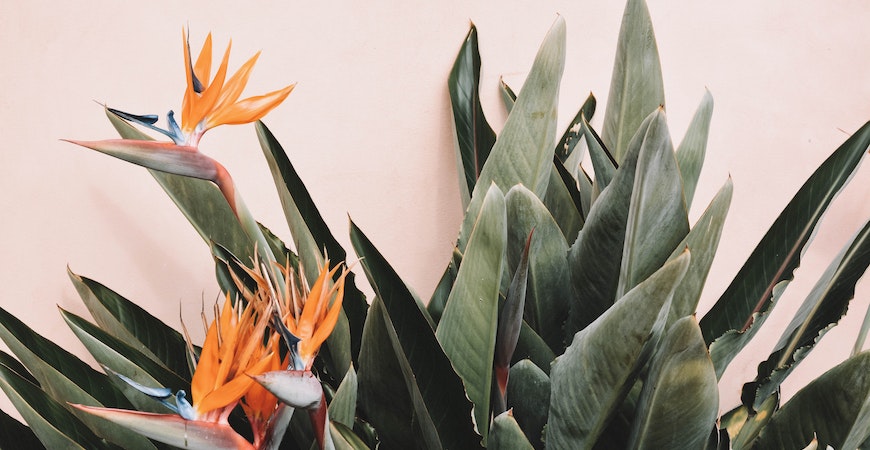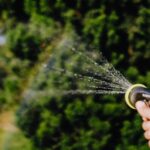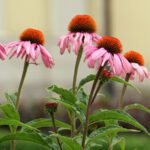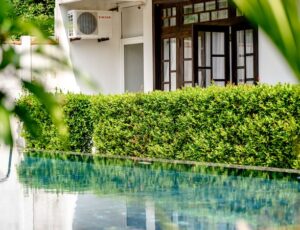
Bird of Paradise Plants: Basics, Care Tips, and Troubleshooting
If you’re looking to add a stunning plant to your garden or home, it’s hard to go wrong with a bird of paradise. Unfortunately, their long life and reputation for high levels of care can be enough to scare some people off.
However, with a bright enough spot, bird of paradise plant care can be straightforward, if not altogether easy. To make things even simpler, our guide will give you all the info you need to help your bird of paradise flower reach its full potential.
Bird of Paradise Basics
Birds of paradise are perhaps best known for their flowers. Resembling brightly plumed birds, they can make any garden look like it’s the home for a flock of orange- and blue-colored avians.
Their bold beauty doesn’t stop there. With large, flat, ribbed leaves, some horticultural novices mistake them for the leaves of the banana plant.
But blooming isn’t a quick process for these plants — in fact, birds of paradise tend to take all stages of their development slowly. If you’re growing them from seed, expect germination to take eight weeks, and then plan on at least four years of care before blooming takes place.
With the right care, though, you should end up with a plant that’s not only beautiful but huge.
Mature plants can reach heights of 30 feet with their leaves growing to a length of around three or four feet. When kept as houseplants, though, they tend to top out at a more reasonable four feet.
Due to their vibrant colors and practically gargantuan height, birds of paradise are ideal in outdoor gardens and landscapes. Even when the flowers aren’t in bloom — their blooming period tends to occur from September through May — they add a distinctly tropical element to your yard.
If you like to arrange flowers for yourself or as gifts, birds of paradise are an ideal plant. Not only do they make any arrangement look a little more exotic, but the cut flowers can also last up to two weeks.
While there is a variety of bird of paradise plants available, most people tend to stick to either the classic orange-and-blue variety or the white bird of paradise.
Caring for Bird of Paradise Plants
Light and Temperature
Whether you’re keeping your bird of paradise plant indoors or outside, the critical component of their care is light. However, the age of the plant and your growing region can determine where you should place your plant and when.
Younger plants need around six hours of bright, indirect light each day. So, try to keep your bird of paradise in a southern-facing window, a sun porch, or in the partial shade outside.
As the plant matures, it’ll often prefer direct light. However, it’s best to take this transition slowly so the abrupt change doesn’t result in sunburnt leaves.
Since the bird of paradise is a tropical plant, that means it thrives when temperatures are a bit warmer. Typically that means between 65 and 70 degrees Fahrenheit during the day and 50 to 55 degrees at night.
You can bring your plant inside when temperatures drop. When spring rolls back around, take care to transition them outside to avoid sunburning their blooms.
Unfortunately, this means that for much of the United States, birds of paradise may be difficult to grow outside. However, ample sunlight and protection from cold drafts can help them thrive indoors.
Water
If you need a plant that’s drought tolerant, birds of paradise are here for you. They are less finicky when it comes to watering than they are with light.
If you’re someone who likes to follow a strict schedule, plan on watering the plant every one or two weeks. If you’re guided by soil and plant conditions, only water when the soil is dry up to an inch below the surface.
In either case, you should water the plants until the soil is thoroughly moist, though not soggy.
During the fall and winter months, you can reduce the frequency of your watering. As temperatures drop, only provide water when the soil has almost completely dried out.
Soil and Potting
Whether you’re planting inside or outside, birds of paradise prefer well-draining soil. Allowing water to sit or soil to stay moist can cause root rot.
Additionally, the plant tends to bloom better in pots, and constant repotting can lead to diminished blooming periods. Instead, replace the topsoil annually to encourage blooming and growth.
When placing a bird of paradise plant in a pot, give the roots plenty of room. The top of the root ball should be nearly at the surface of the soil when first planted to aid blooming.
If the roots feel too confined, it can prevent blooming and growth.
So, don’t overthink this. Find a pot that works, fill it with well-draining soil, and give your plant the care it needs to allow it to thrive.
Troubleshooting Care Issues
While caring for a bird of paradise is pretty straightforward, there are some common issues that many gardeners experience. Fortunately, most require easy fixes.
One issue that most people experience that isn’t really an issue at all is split leaves. This is a normal adaptation the plants undergo to protect them from strong winds.
Additionally, birds of paradise tend to be pest-free. However, depending on the moisture level of the soil, spider mites are a possibility.
If you see any of these tiny creatures on your plant, a weekly spray of a natural pesticide and a quick wiping of the leaves is enough to keep them at bay.
While split leaves are not an issue, yellowing, wilting, or curling leaves mean that something’s wrong.
For yellowing leaves, reduce the frequency of your waterings and allow the soil to dry further before giving it additional water. On the other hand, wilting or curling leaves mean the plant is thirsty and in need of more frequent watering.
Faux Birds of Paradise
Birds of paradise are visually stunning plants. And, as you can read above, their needed level of care isn’t so high as to be truly intimidating.
Still, we understand that there may be those among us who want the beautiful upside without any anxiety-inducing downside. Put another way: there’s nothing wrong with wanting a fake plant.
Whether you want vibrant flowers or tropical, banana tree-like leaves to decorate your home, you can purchase a wide range of faux birds of paradise. Combining them with some fake elephant ear plants or banana tree leaves can add another level of exotic beauty to your home.
Bird of Paradise Care Can Be Easy
If you’re looking for a vibrant plant that adds tropical vibes to your home or garden, consider the bird of paradise. Caring for them is straightforward when you know what to do, and you’ll be rewarded with a long-lasting, alluring plant.
For more tips on keeping your home, garden, or lawn looking beautiful all year round, bookmark AskWetAndForget.com right now!













